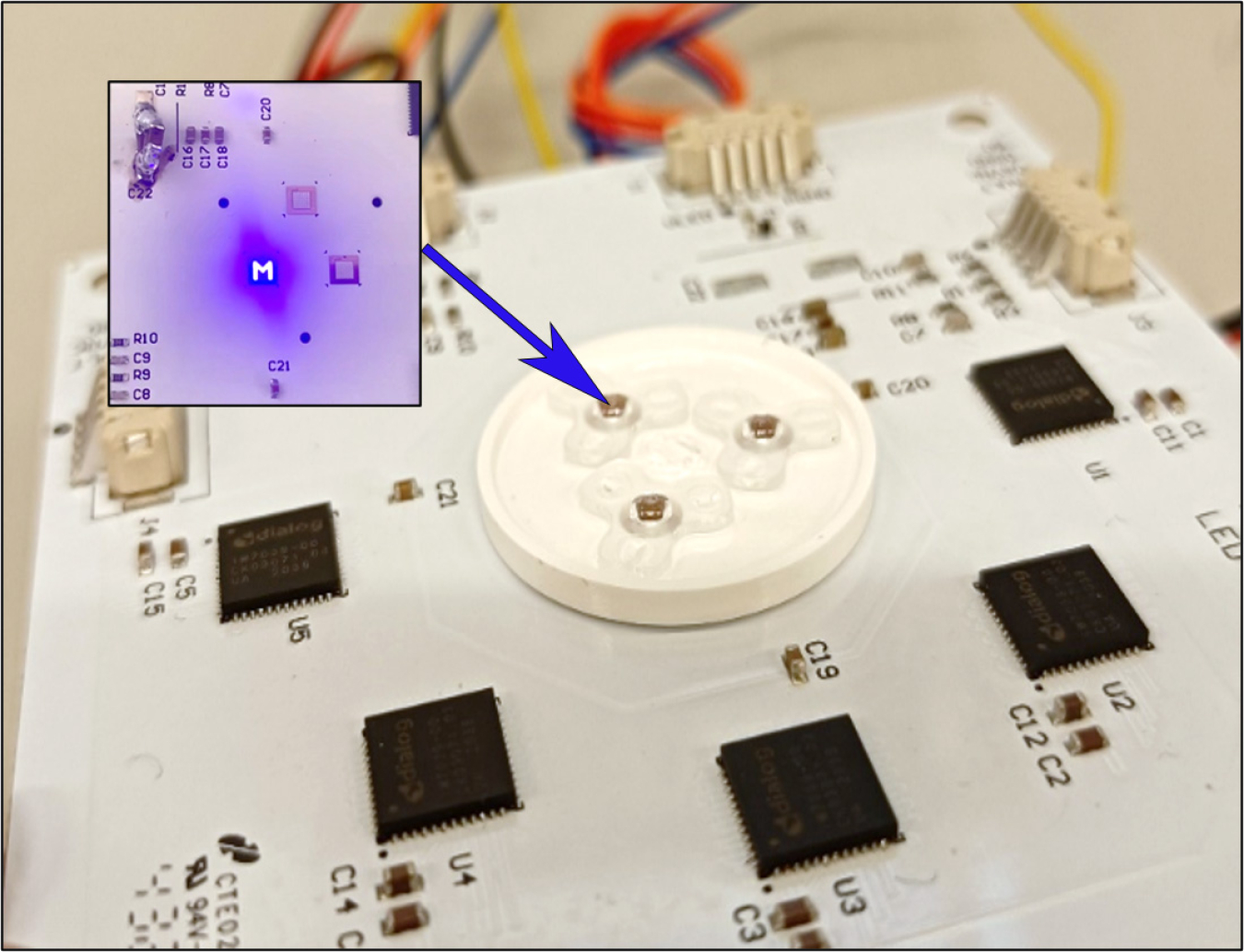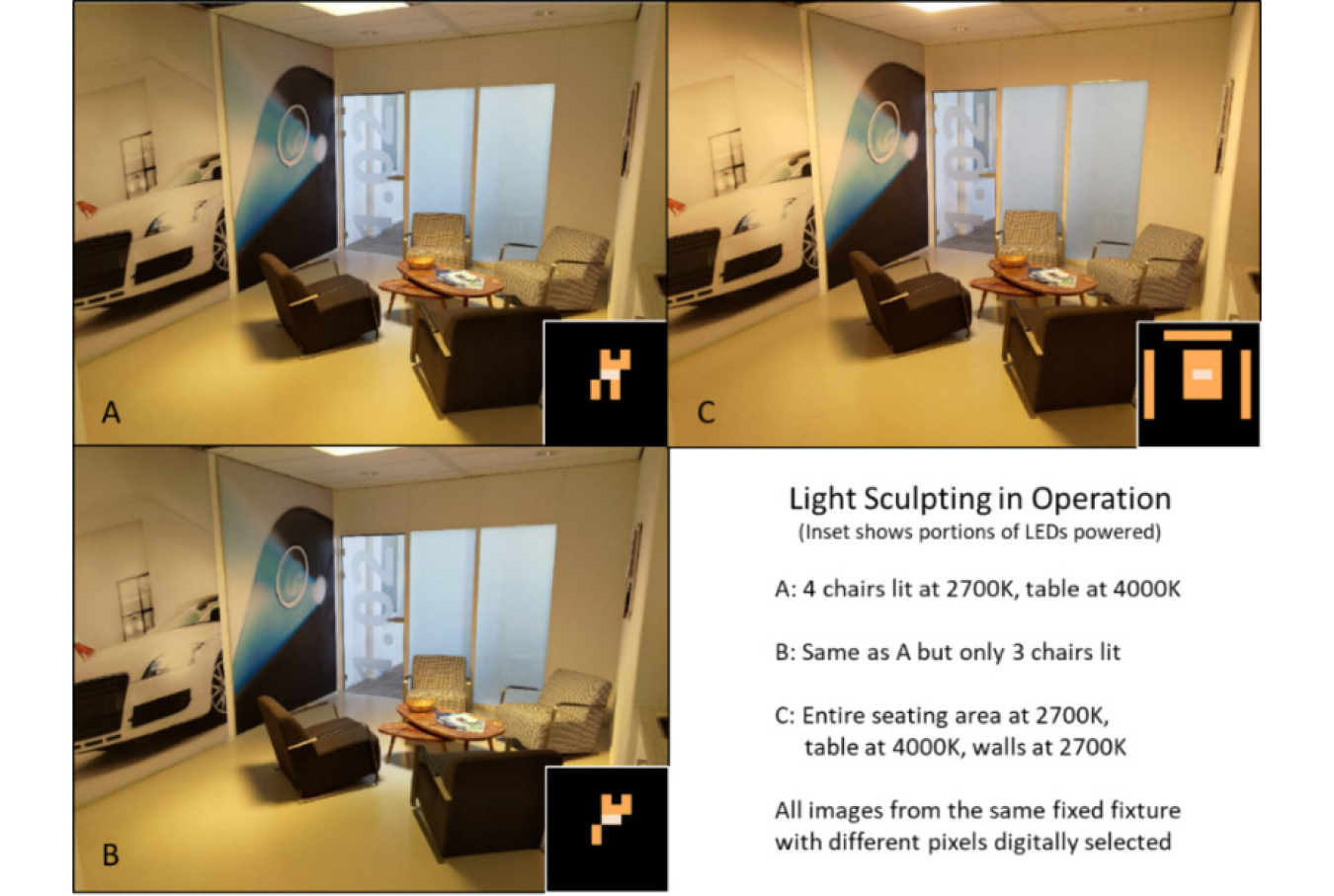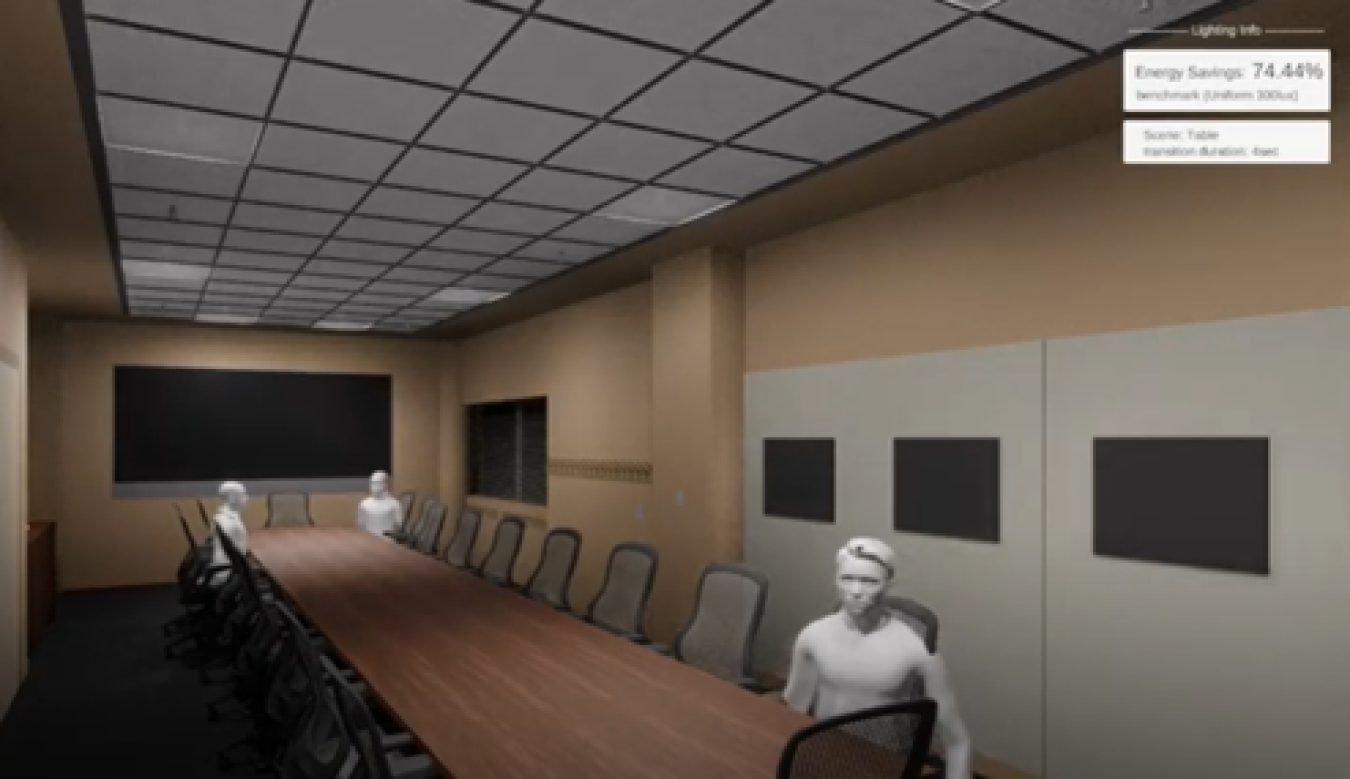
Figure 1: One module of the RGB beam steerable light engine is shown, with the insert showing individual pixel addressing of the blue phosphor-converted, 49 element LED die. Each die is covered by a special optic so that as each pixel is energized, the light will be projected in a unique direction. The module can generate 49 unique spatially and spectrally tunable beams.
Occupant-centric control of autonomous lighting system controls for adaptive lighting can provide energy savings and wellness impacts by delivering the right amount of light at the right time in the right place. Rensselaer Polytechnic Institute (RPI) is collaborating with researchers at Lumileds LLC and lighting architects at HKS Inc. to develop a spatially adaptive, spectrally tunable lighting control system. This project combines advances in digitally programmable LED fixture beam steering, novel occupant sensing and location monitoring platforms, and new control system capabilities that combine fixture and sensing information to inform how to properly and ergonomically sculpt the light in real time. The project uses advanced visualization tools to optimize autonomous lighting control algorithms that deliver enhanced lighting profiles for occupant performance and wellbeing with minimum energy use.
To start, the team demonstrated a spatially and spectrally tunable light module comprised of three LEDs (RGB), each containing 49 digitally addressable pixels and each sitting under a specially designed lens for real-time directional and spectral control of light output. The core beam steering technology at the heart of this achievement was developed in a previous DOE-funded research project at Lumileds. The new module (Fig. 1) has a spectral tuning range of 2200K to 10,000K and CRI >90 with R9 >50.
Lumileds then built and tested a programmable, beam steerable 2x2 troffer combining 36 of these modules (total flux exceeding 9000 lumens) covering an adjustable viewing angle of 100°. To achieve wider spatial tunability, the projection modules are covered with an edge-lit waveguide plate that uses the same RGB die elements, providing an additional 5000 white-tunable lumens in a batwing profile, expanding the spatially controllable range of beam angles to 128° with a full width half maximum angle of 152°. Spot illumination, flood illumination, and wall illumination can be digitally selected depending on the lighting required (Fig. 2).

Figure 2: A prototype 2X2 troffer with digitally adaptive spatial and spectral control demonstrated in a simple room concept area.
At Rensselaer, the team designed and simulated an autonomous lighting control platform with accurate occupant localization with pose detection and activity estimation, using a simple network of Kinect sensors. A Unity game engine-enabled virtual reality (VR) platform was also developed at Rensselaer, in conjunction with modified illumination modeling tools developed by lighting designers at HKS Inc. The team has tested the control algorithms with real occupant movement fed back to the control system, demonstrating facile simulated control of sculpted lighting profiles. When viewing these VR simulations, developers can assess the timing, smoothness, and ergonomics of dynamically tunable lighting.
The simulation tool can also estimate energy savings (Fig. 3). The light sculpting algorithm shapes the light around the occupants, ensuring adequate illumination coming from the right directions based on the occupant activity (e.g., informal meeting, presentation, filling out forms). The illumination profile is then gradually tapered (variable tapering functions can be used) to lower illuminance levels for portions of the room where there are no occupants.

Figure 3: Unity simulation of the conference room testbed with eight programmable 2x2 troffers installed. The illuminance around the three simulated occupants is 300 lux, and elsewhere the illuminance is set for 150 lux, producing an estimated 74% reduction in energy use relative to a uniform 300 lux illuminance of all horizontal and vertical surfaces.
The complete adaptive lighting platform is being installed and tested in a conference room at Rensselaer, where eight 2x2 troffers will be installed. The lighting system capabilities for this testbed will provide up to 520 distinct illumination profiles (not including spectral tuning). (June 2022)
Return to Research Highlights.

